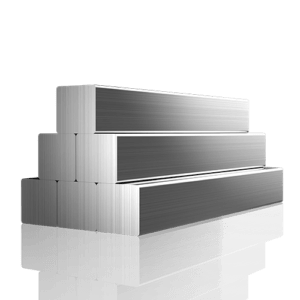Shandong Qilu lndustrial Co.,Ltd.
Forged by Steel: The Evolution of Industrial Strength in Modern Architecture
Introduction

Steel, forged by innovation and engineering prowess, has fundamentally reshaped modern architecture. From the skeletal frames of skyscrapers to the graceful spans of bridges, steel has enabled architects to push the boundaries of what is possible in structural design. This blog explores the rich history, technological advancements, environmental impact, and future trends of steel in architecture, showcasing how this resilient material continues to forge the landscape of our cities and buildings.
Early Uses of Steel in Architecture
The use of steel in architecture began in the late 19th century, marking a significant departure from traditional building materials like stone and wood. The Bessemer process, which allowed for the mass production of steel, revolutionized construction practices by providing a material that was not only stronger than iron but also more malleable and durable. Early adopters of steel included industrial buildings and bridges, where its superior strength-to-weight ratio allowed for the creation of larger and more complex structures.
The Rise of Modern Skyscrapers
The 20th century witnessed the rapid rise of skyscrapers, and steel was at the heart of this architectural revolution. Buildings like the Home Insurance Building in Chicago (1885) and the Empire State Building in New York (1931) showcased steel’s ability to support unprecedented heights. The development of steel-frame construction techniques, such as the Kahn system and the use of rolled steel sections, enabled architects to design taller and more efficient buildings. This period marked a shift towards vertical urbanization, with steel providing the structural integrity needed for cities to grow skyward.
Structural Advantages of Steel
Steel possesses several key advantages that make it ideal for modern architecture. Its high tensile strength allows for long spans and open floor plans, reducing the need for interior columns and enhancing design flexibility. Steel structures are also lighter in weight compared to concrete, which reduces foundation loads and construction time. This lightweight nature, combined with steel’s durability and resistance to fatigue, makes it an attractive choice for both new construction and adaptive reuse projects.
Technological Innovations in Steel Manufacturing
Advancements in steel manufacturing have further expanded its capabilities and applications in architecture. Computer-aided design (CAD) and building information modeling (BIM) have revolutionized the way steel structures are designed and fabricated, allowing for greater precision and efficiency. Modern steel production techniques, such as electric arc furnaces and continuous casting, have improved the material’s purity and strength, while advancements in coatings and finishes have enhanced its durability and resistance to corrosion.
Case Studies: Iconic Steel Structures
Burj Khalifa
Located in Dubai, UAE, the Burj Khalifa stands as the tallest building in the world, reaching a height of 828 meters. Completed in 2010, its steel frame was crucial in supporting its massive height, showcasing the engineering prowess made possible by advanced steel technologies.
Sydney Opera House
Designed by Jørn Utzon and completed in 1973, the Sydney Opera House is an architectural icon renowned for its sail-like roofs made of precast concrete panels supported by steel trusses. The use of steel allowed for the creation of its distinctive and complex geometric forms.
Millau Viaduct
Spanning the Tarn Valley in France, the Millau Viaduct is the tallest cable-stayed road bridge in the world. Designed by Foster + Partners and completed in 2004, its steel deck and pylons demonstrate the structural efficiency and aesthetic possibilities of steel in bridge construction.
Environmental Impact and Sustainability
Steel’s environmental impact has become a focal point in modern architecture, as sustainability concerns grow. Steel is highly recyclable, with recycled content commonly used in new construction projects. The life cycle assessment of steel structures shows that they have a significantly lower carbon footprint compared to traditional building materials like concrete. Advances in energy-efficient steel production, including the use of renewable energy sources and the development of low-carbon steelmaking technologies, further enhance its sustainability credentials.
Future Trends and Innovations

Looking ahead, the future of steel in architecture is marked by innovation and sustainability. Emerging technologies such as 3D printing of steel components and advanced robotics promise to streamline construction processes and reduce material waste. The concept of “smart” buildings, which integrate sensors and data analytics into steel structures, is poised to revolutionize how buildings are designed, constructed, and operated. Additionally, architects are exploring new forms and applications for steel, pushing the boundaries of what is structurally and aesthetically possible.
Conclusion
Forged by steel, modern architecture stands as a testament to human ingenuity and the pursuit of innovation. Steel has played a transformative role in shaping our cities and defining our skylines, offering unparalleled strength, durability, and aesthetic appeal. As we navigate the challenges of urbanization and climate change, steel remains a cornerstone of sustainable building practices, embodying the resilience and adaptability needed to create cities and structures that endure for generations.
FAQ
Q: What are the main advantages of using steel in architecture?
A: Steel offers high strength-to-weight ratio, flexibility in design, and ease of construction, making it ideal for tall buildings and innovative structures.
Q: How sustainable is steel in architecture?
A: Steel is highly recyclable and its production has become increasingly energy-efficient, reducing its environmental impact over its life cycle.
Q: What are some famous steel structures around the world?
A: Examples include the Eiffel Tower, the Gateway Arch, and the Burj Khalifa, each showcasing steel’s versatility and durability in architectural design.
